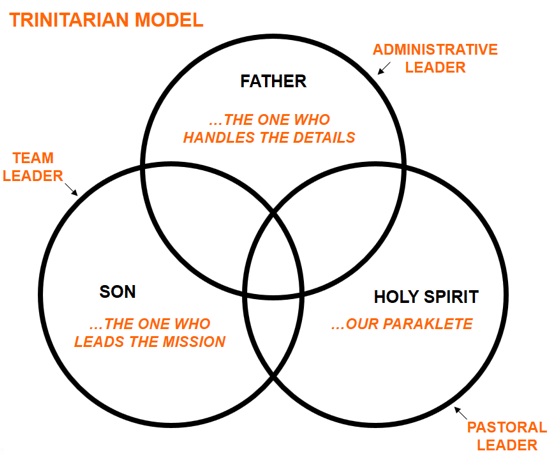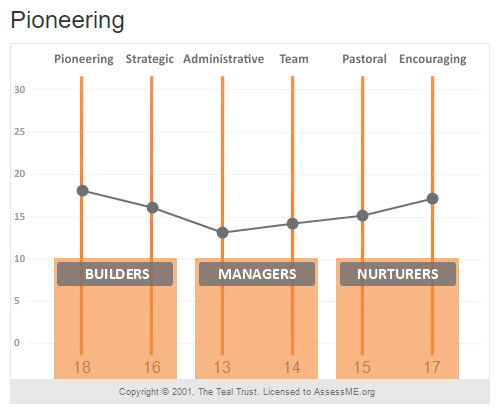
View this Page’s Table of Contents

THE BENEFIT TO YOUR CHURCH
“To help your church staff build highly effective ministry teams, dynamically leading your ministry ventures as they represent the Godhead whom they serve.”
The Leadership Style Assessment©
The Leadership Style Assessment© by AssessME.org is designed to facilitate effective leadership team formation. To that end, every person in your church was created by God to possess positive influence. Helping your people learn how to utilize their unique Style of Influence (SOI) is what transforms them from passive, uninvolved people, to realizing their role as a born leader. As such, they now experience that crucial feeling of knowing how they now fit in Kingdom service.
The designers of AssessME.org question the wisdom of churches using the point-person leadership model. This is because no one person can effectively oversee areas of ministry that require skillsets contrary to the leader’s temperament. When that one person falters or leaves, the whole ministry may fall apart. Rather, we believe the Bible teaches that “A cord of three strands is not easily broken” (Ecclesiastes 4:12). But our leadership philosophy goes much deeper than this. Take a look at the three-strand-cord image below…

Looking Directly at the Three Strand Cord
As you can see from the image above, the specific mix of profiles will vary, depending upon the purpose of the team. How are these leadership types identified? Well, if you turn the three-strand chord so that you look straight toward the strands, this is what you see…

The oldest Christian temperament theory models were based upon how you and I, although different, each reflect the image of God. This is because God exists as one God expressed in three distinct personalities…Father, Son, and Holy Spirit. Each member of the godhead has a unique temperament displayed through specific functions and regarding their relationship to His mankind, displayed through distinct mannerisms. Let’s now explore these distinctives.
I) God the Father – The Administrative Manager
Jesus taught us in the Lord’s Prayer to address our needs to God the Father, our Provider. When humanity displays administrative functions, they do so because they emulate God the Father’s nature. This is by design, not accident.
In our Leadership Style Assessment©, we call this category “MANAGERS”. Managers may assess as either Administrative Leaders (i.e., focus on tasks, programs, or systems) or Team Leaders (i.e., focus on people-mobilization and people-management).
II) God the Son – The Creator of All Things & Founder of Our Kingdom Mission
God the Son clearly demonstrates both Creative and Missional qualities (e.g., Colossians 1:16-20). The Bible teaches that all things were made through Him. He is missional in that He came to earth to teach us, die for us, and ultimately resurrect us from mortal to immortal. But while we live on earth, He has given us a mission to make more disciples of Jesus Christ. And He has told us that He will forever be with us as we seek to carry out His mission (e.g., Hebrews 13:5, John 14:8, Matthew 28:20).
In our Leadership Style Assessment©, we categorize entrepreneurs, missional people, and creatives, as “BUILDERS”. Builders may be divided into two broad categories: Pioneering Leaders, and Strategic Planners.
III) God the Holy Spirit – The Comforter, Encourager, Teacher & Guide
The Holy Spirit has been called, our ‘Paraclete’. Theologically, this term has come to be understood also as the One who comes along side of us, our Comforter, our Nurturer, and our Guide. Highly social and empathic people emulate the third person of the godhead, the Holy Spirit.
Within the Leadership Style Assessment©, we categorize such people as “NURTURERS”. Nurturers fall into two distinct types: Persons who like to care for groups of other people (i.e., Pastoral Leaders), or persons who prefer to care for other individuals (i.e., Encouraging Leaders).
Sample Member & Admin Report
Leadership Style Profile Blends
In our image of the Trinity, the three circles overlap, representing areas where trait blends exist between members of the godhead. These trait-blends also exist within humanity.
Natural Blends
Our assessment highlights these Natural Blends when a dominant score, like in our example of the Pioneering Leader below, aligns closely with a secondary score from a near-related profile-type across the continuum. We refer to these as ‘Natural Blends‘. As our assessment plots each person’s scores across the leadership style continuum, someone scoring high as a Pioneer, and yet secondarily assessed as a Strategic, would be considered a Natural Pioneer/Strategic Blend. Refer to the graphic below for a visual representation…

Unnatural Blends
A common Unnatural blend: Although the Pioneering Leader in this example scores high in “Encouraging“, it doesn’t mean they possess true Encouraging Leader traits. The combination of “Pioneering” and “Encouraging” is termed an ‘Unnatural Blend’ because these leadership styles are not closely related on the Leadership Style continuum.
Pioneering Leaders excel in articulating a grand vision, and often can identify the many types of people needed to execute it. This ability makes them adept recruiters and mobilizers of people into ministry service. This kind of support often generates a strong score in the “Encouraging” category.
In contrast, true Encouraging Leaders possess strong relational and empathic abilities. Whereas, Pioneering Leaders are task-driven with the singular goal of transforming their vision into a reality. They can be relational within the context of helping people accomplish the ministry vision, but they are not naturally social. Learn more about implementing the Leadership Style Assessment© by reading Made for a Mission, authored by our systems designer, David A Posthuma.
Succession Planning
How your church leaders formulate leadership teams is determined by asking: “Will this leadership team create NEW programs, systems, or churches? Or, will they manage EXISTING programs/churches?”. In each case, the team construct will look like one of the following…
New Ministry Development
- A Pioneering Leader to cast vision, recruit people, and manage the project.
- A Strategic Planner (or Administrator if the Pioneer has Strategic skills) to design the project blueprint and manage details/tasks.
- A Pastoral Leader to provide spiritual/emotional care for team members, and for the people they serve.
Established Ministry Management
- A Team Leader to manage the people and the program or church.
- An Administrative Leader to address all the management details.
- A Pastoral Leader to provide spiritual/emotional care for team members, and for the people they serve.
Planned Succession
Succession planning should be intentional, ideally occurring about three to five years after establishing a new ministry program or church. Pioneering Leaders typically thrive in large projects, and can stay in a leadership role longer in larger projects, but often grow frustrated when daily management overshadows their initial vision and project momentum. They naturally desire to move on to new entrepreneurial projects at this stage. Healthy church leaders foresee this transition and communicate it early to everyone involved in the ministry or program, emphasizing that the change in leadership will ultimately benefit all participants. Succession planning should follow this approach…
- Pioneering Leaders are succeeded by a trained Team Leader who is better at working with people and managing the ministry’s growth on a slower pace so it may stabilize.
- Strategic Planners are succeeded by a trained Administrative Leader who can take the ministry’s blueprint and better manage its daily tasks and obligations. Strategic Planners are architects who like to help create the vision-plan, but once it’s designed, they would prefer to not address its daily task obligations of management.
- In most cases, Pastoral Leaders will remain serving as a leader Nurturing Leader within the leadership team, helping to smooth over concerns regarding leadership transition.
Leadership Style Overview Video

Our Philosophy of Ministry
To learn more about our philosophy of ministry, please visit our Ministry Philosophy page for greater details.
